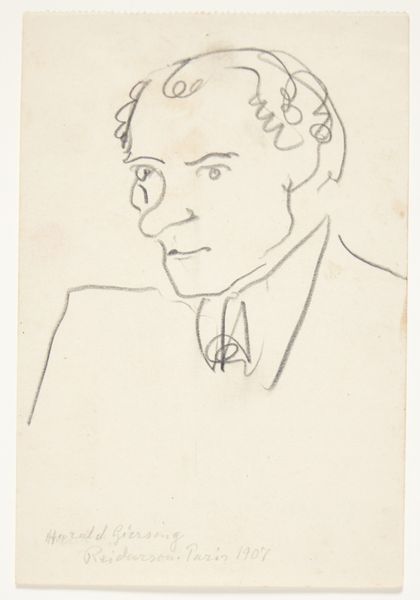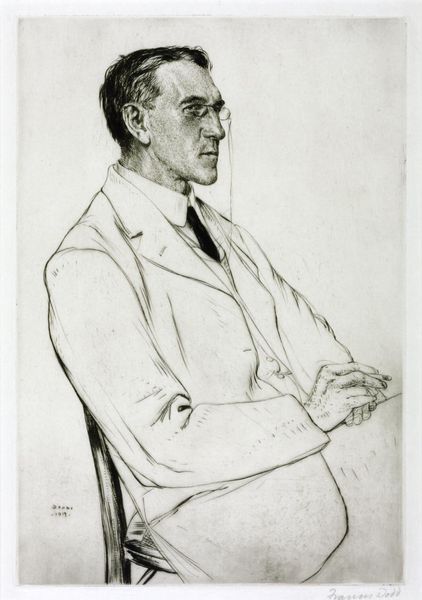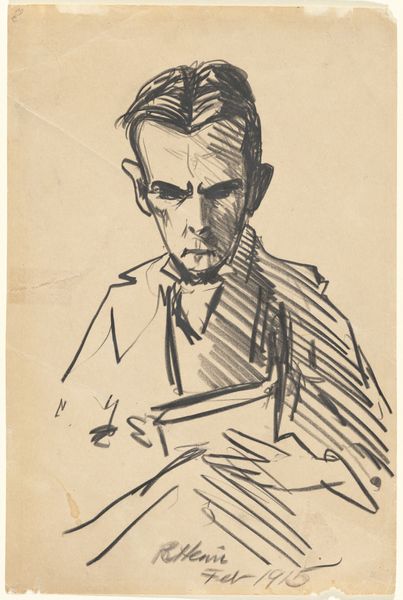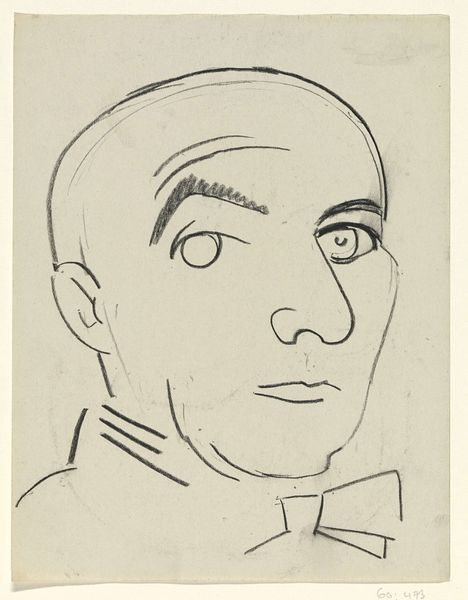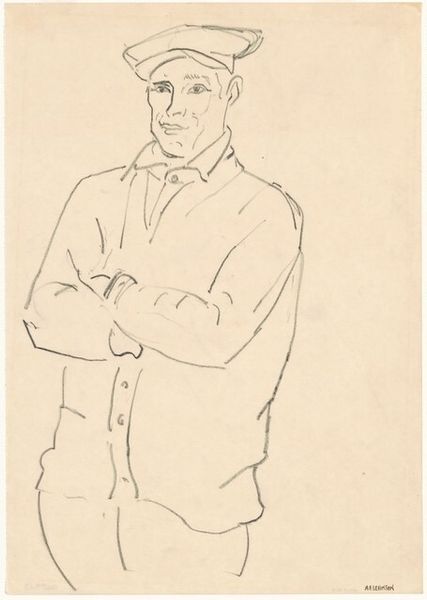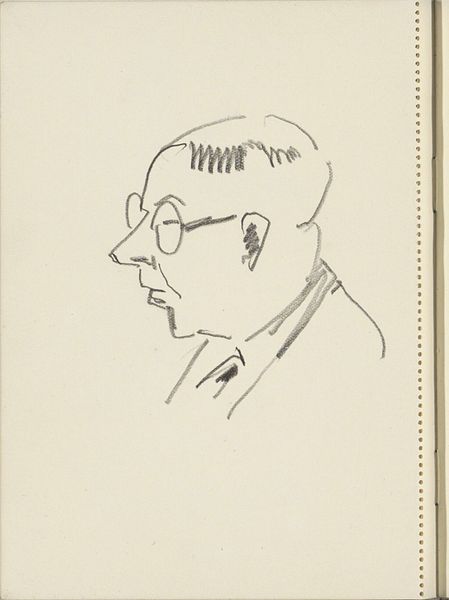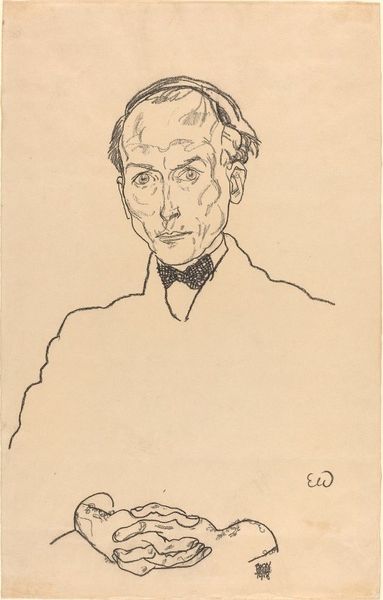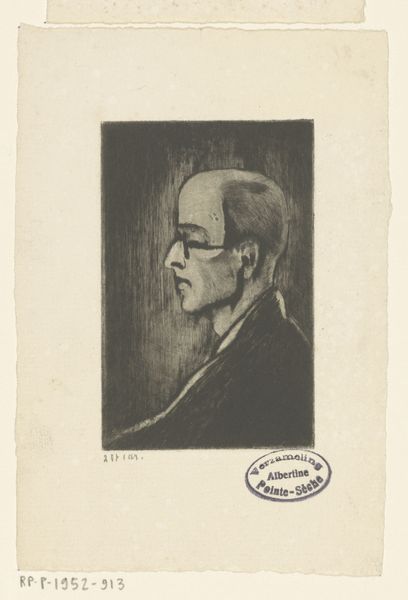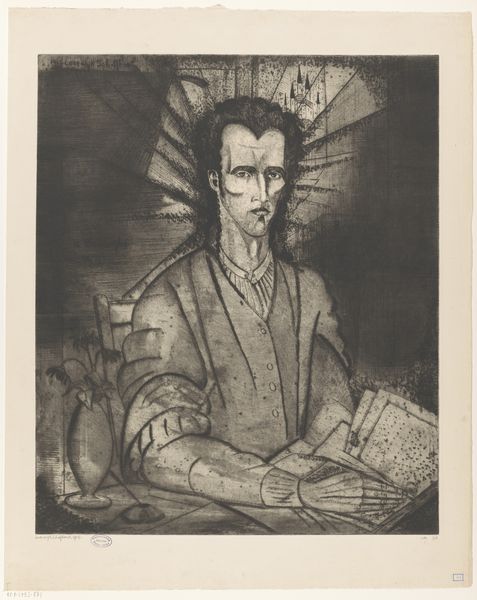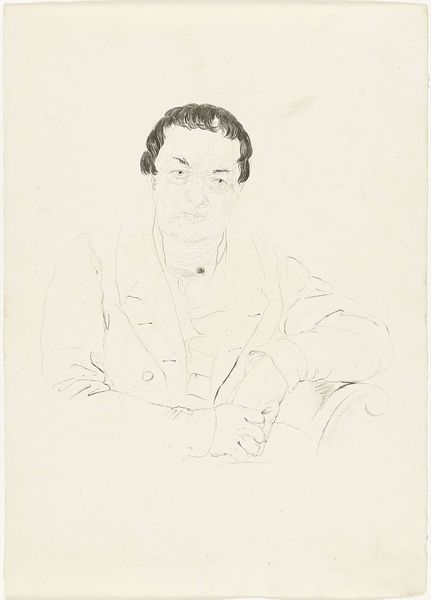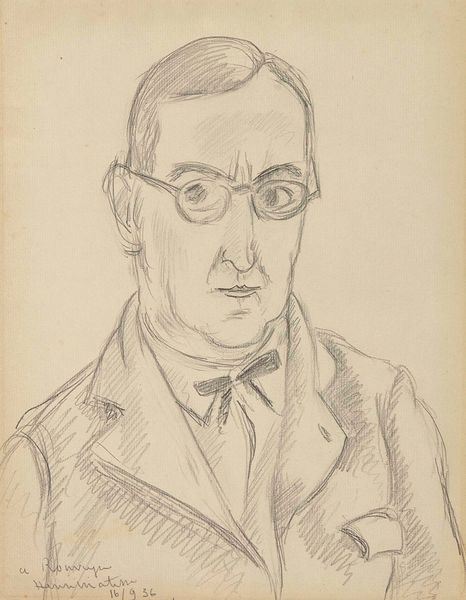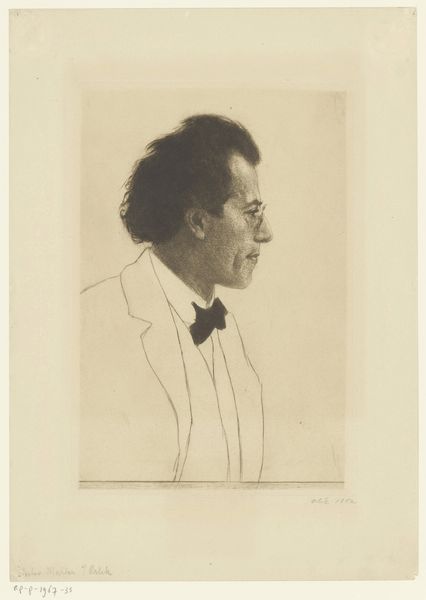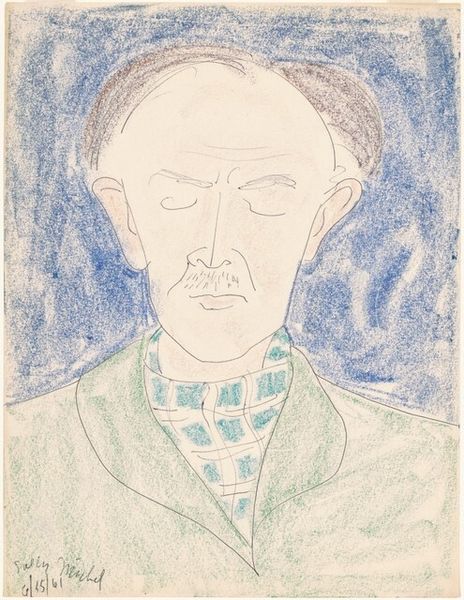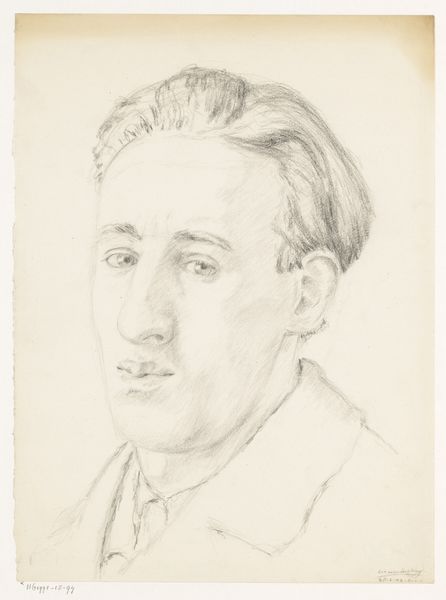
drawing, pencil
#
portrait
#
drawing
#
self-portrait
#
caricature
#
caricature
#
pencil drawing
#
pencil
#
modernism
Dimensions: height 285 mm, width 203 mm
Copyright: Rijks Museum: Open Domain
Curator: Here we have Henk Hartog's "Self-Portrait" from 1941, created with pencil on paper. Editor: Immediately, the elongated features strike me. The artist exaggerates his own nose and jawline. It has an almost satirical quality, a wry self-awareness in the lines. Curator: The context is key. Hartog created this during the Nazi occupation of the Netherlands. As a Jewish artist, producing any kind of imagery would have been fraught with danger. Self-portraits could have served various purposes under such oppressive circumstances, including both introspection and defiance. Editor: I’m intrigued by the material choices. The delicate pencil strokes, the slightly muted color palette. They seem to amplify the sense of restraint and forced compliance. What does this suggest in relation to formal aspects like symmetry? Curator: The use of pencil lends itself to a kind of intimate, immediate creation. He doesn't present a polished image. The awkward perspective adds a slightly unsettling feel to the work. Also, notice the inclusion of writing material: it suggests Hartog wanted to portray himself as an intellectual or writer. This decision speaks of artistic choices as self-defining assertions of identity. Editor: And look at how that single bottle interrupts the lines on the lower-right plane of the artwork, almost giving it a three-dimensional shape. Fascinating how a material object takes up compositional and symbolic value! Curator: His placement in relation to the viewer—staring directly out with a sort of detached knowing. In terms of cultural commentary, perhaps it's suggesting a loss of control in what is permissible artistic expression or any expression at all. The work serves as a marker of political and cultural subjugation through controlled imagery and artmaking. Editor: I read in those subtly harsh lines the story of a man living under duress who is simultaneously unyielding. I would hope that this lends another layer to understand the emotional complexity the artwork is offering here. Curator: I think you're right, and by analyzing the interplay of image and context we hopefully come closer to a nuanced perspective that both appreciate the structural intricacies and the artwork's power, as it's related to its historic surroundings. Editor: Indeed. It makes me reconsider what resistance looks like when you do not have words.
Comments
No comments
Be the first to comment and join the conversation on the ultimate creative platform.
